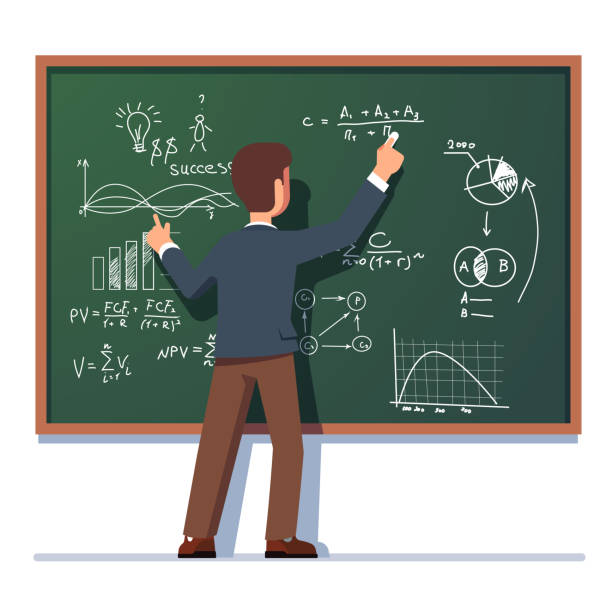Professional development designed specifically for experienced math teachers
Wiki Article
Achieving Venture Excellence: Comprehending Industry Standards and Strategic Leadership for Mathematics Professors
Accomplishing venture excellence in maths education requires a careful exam of industry criteria and the role of critical management. Mathematics professors must understand how these requirements shape educational program and mentor approaches. Additionally, effective management can drive partnership and expert growth amongst instructors. This diverse approach questions about the useful ramifications for students' profession readiness. What methods can faculty adopt to bridge the gap between education and sector needs?The Importance of Industry Standards in Mathematics Education
In the domain of mathematics education and learning, sticking to industry criteria is necessary for ensuring that programs properly prepare trainees for real-world applications. Sector requirements provide a framework that straightens educational results with the skills needed in numerous careers. By including these requirements, math programs can improve their significance and roughness, consequently boosting trainee interaction and finding out end results.
Strategic Leadership: Specifying Duties and functions
Reliable tactical leadership within maths professors calls for a clear definition of duties and responsibilities to assure excellent working and alignment with institutional objectives. Leadership frameworks have to be developed to mark tasks among professors members, managers, and assistance staff, guaranteeing that each individual comprehends their payments toward cumulative purposes. Faculty leaders must cultivate an environment that advertises cooperation and accountability, enabling employee to engage efficiently in curriculum growth and analysis procedures.Moreover, calculated leaders need to focus on recurring specialist advancement, guaranteeing that professor are well-equipped to fulfill the evolving needs of maths education and learning. This includes not just aligning private roles with institutional top priorities however also fostering a society of constant renovation and development. By clearly defining duties, strategic leadership can improve communication, improve decision-making processes, and eventually contribute to a much more cohesive and effective mathematics professors, positioned to meet the obstacles of modern education.
Ideal Practices for Enhancing Mentor and Learning
In the pursuit of boosting training and discovering, mathematics professors can profit from ingenious teaching techniques that engage pupils successfully. Implementing collective understanding atmospheres cultivates synergy and crucial reasoning skills among learners. These best practices are important for producing a dynamic instructional experience that advertises deeper understanding of mathematical principles.Innovative Training Approaches
While typical approaches of teaching have their place, ingenious teaching approaches are vital for enhancing interaction and understanding among maths faculty and their trainees. Techniques such as turned classrooms and problem-based understanding urge energetic participation, allowing trainees to take ownership of their discovering. Incorporating innovation, such as interactive simulations and on-line cooperation tools, even more sustains diverse learning styles and fosters crucial thinking. Additionally, making use of real-world applications in lessons aids trainees link mathematical concepts to everyday life, making the topic much more relevant and attractive. Faculty members that accept these techniques can develop a vibrant understanding atmosphere that not only enhances understanding but also influences a long-lasting passion for maths. Embracing innovative techniques ultimately causes greater levels of trainee achievement.
Collaborative Learning Atmospheres
Building on the innovative training strategies previously discussed, collaborative learning atmospheres play an essential function in improving the educational experience for maths faculty and their students. These settings urge energetic engagement and foster a sense of neighborhood, allowing pupils to discover from each other and develop critical thinking abilities. Best practices consist of structured group work, peer tutoring, and project-based learning, which promote collaboration and shared obligation for finding out end results. Faculty must facilitate discussions and give advice while enabling students to explore concepts jointly. Additionally, incorporating innovation can improve partnership by giving platforms for interaction and source sharing. Ultimately, collective understanding settings equip trainees to take possession of their education and learning and cultivate a much deeper understanding of mathematical ideas through synergy and interaction.
Straightening Professors Goals With Institutional Purposes
Straightening professors goals with institutional objectives is important for cultivating a cohesive educational environment that improves both teaching performance and student success. When professor comprehend and embrace the wider goal of their institution, their training strategies can be customized to support these purposes. This placement ensures that faculty are not only satisfying departmental assumptions however also adding to the overarching goals of the organization, such as boosting pupil view it now interaction and scholastic efficiency.To accomplish this alignment, routine interaction in between professors and administration is critical. Workshops and collaborative conferences can facilitate discussions on institutional priorities and exactly how professors can incorporate these right into their curricula. Furthermore, performance analyses can be developed to mirror these straightened objectives, motivating faculty to innovate in their training methods. Ultimately, when professors goals his explanation reverberate with institutional aims, they cultivate a more unified approach to education, benefiting both instructors and pupils alike.
Growing a Society of Continual Enhancement
Cultivating a culture of constant enhancement within maths faculty is essential for enhancing both educational quality and trainee end results. This includes producing an environment where faculty members are urged to regularly assess their teaching techniques and seek feedback. Specialist development opportunities must be readily available, allowing teachers to check out new instructional strategies and integrate evidence-based techniques right into their curriculum.Additionally, cooperation among professors is vital; sharing experiences and insights can cause innovative options and enhanced training methodologies. Establishments need to carry out systematic assessment processes, making it possible for professors to assess their performance and determine locations for development.
Finally, acknowledging and commemorating accomplishments, despite just how little, reinforces the commitment to enhancement. By installing continuous improvement right into the faculty society, math departments can improve their overall efficiency, inevitably profiting both instructors and pupils in the pursuit of scholastic quality.
Ingenious Methods to Mathematics Program Advancement
Various cutting-edge methods can transform mathematics program development, making it a lot more responsive to the progressing academic landscape. experienced math teachers. One effective approach involves incorporating innovation, such as online understanding platforms and interactive software, to improve student engagement and access. This change enables a mixed understanding Get More Information setting, satisfying diverse understanding stylesAdditionally, embracing a project-based discovering framework motivates joint problem-solving and real-world application of mathematical principles. Professors can likewise highlight interdisciplinary links, illustrating how maths intersects with areas like design, art, and science, cultivating an extra holistic educational experience.
Regular comments from students and sector stakeholders can guide educational program modifications, making certain significance and roughness. In addition, offering specialist advancement chances for faculty can advertise ingenious teaching methods and keep educators notified of the most recent patterns. With these methods, mathematics programs can grow a dynamic learning environment that prepares trainees for future obstacles and professions.
Often Asked Concerns
Exactly How Can Faculty Gauge the Influence of Sector Standards on Trainee Outcomes?
Professors can gauge the influence of sector requirements on trainee end results by evaluating analysis results, tracking employment rates, soliciting employer comments, and carrying out longitudinal research studies to contrast student efficiency prior to and after carrying out the standards.What Resources Are Readily Available for Professional Advancement in Mathematics Education?
Many resources for specialist development in mathematics education consist of online programs, workshops, webinars, expert organizations, seminars, and peer partnership opportunities. These systems facilitate skill enhancement, cutting-edge teaching techniques, and reliable integration of modern technology into mathematics instruction.Just How Do Sector Standards Vary Across Different Geographical Regions?
Sector requirements vary significantly throughout geographical regions as a result of elements like governmental laws, instructional top priorities, and social influences. These discrepancies can affect curriculum advancement, training methods, and the application of analysis practices in maths education and learning.What Duty Does Technology Play in Getting Business Quality in Mathematics?
Innovation enhances business quality in mathematics by simplifying procedures, making it possible for information analysis, promoting cooperation, and offering accessibility to resources. It equips instructors and pupils alike, advertising ingenious teaching approaches and improving overall educational end results in the field.Just How Can Faculty Successfully Work Together With Industry Partners?

In the search of enhancing training and discovering, math faculty can profit from ingenious mentor approaches that engage pupils effectively. While typical methods of training have their area, innovative teaching strategies are essential for improving interaction and understanding amongst mathematics professors and their trainees. Structure on the ingenious teaching strategies previously talked about, collaborative discovering atmospheres play an essential role in enhancing the instructional experience for mathematics faculty and their students. Straightening faculty objectives with institutional goals is important for fostering a natural educational atmosphere that boosts both training efficiency and pupil success. Fostering a society of continual renovation within maths faculty is necessary for enhancing both instructional high quality and pupil outcomes.
Report this wiki page